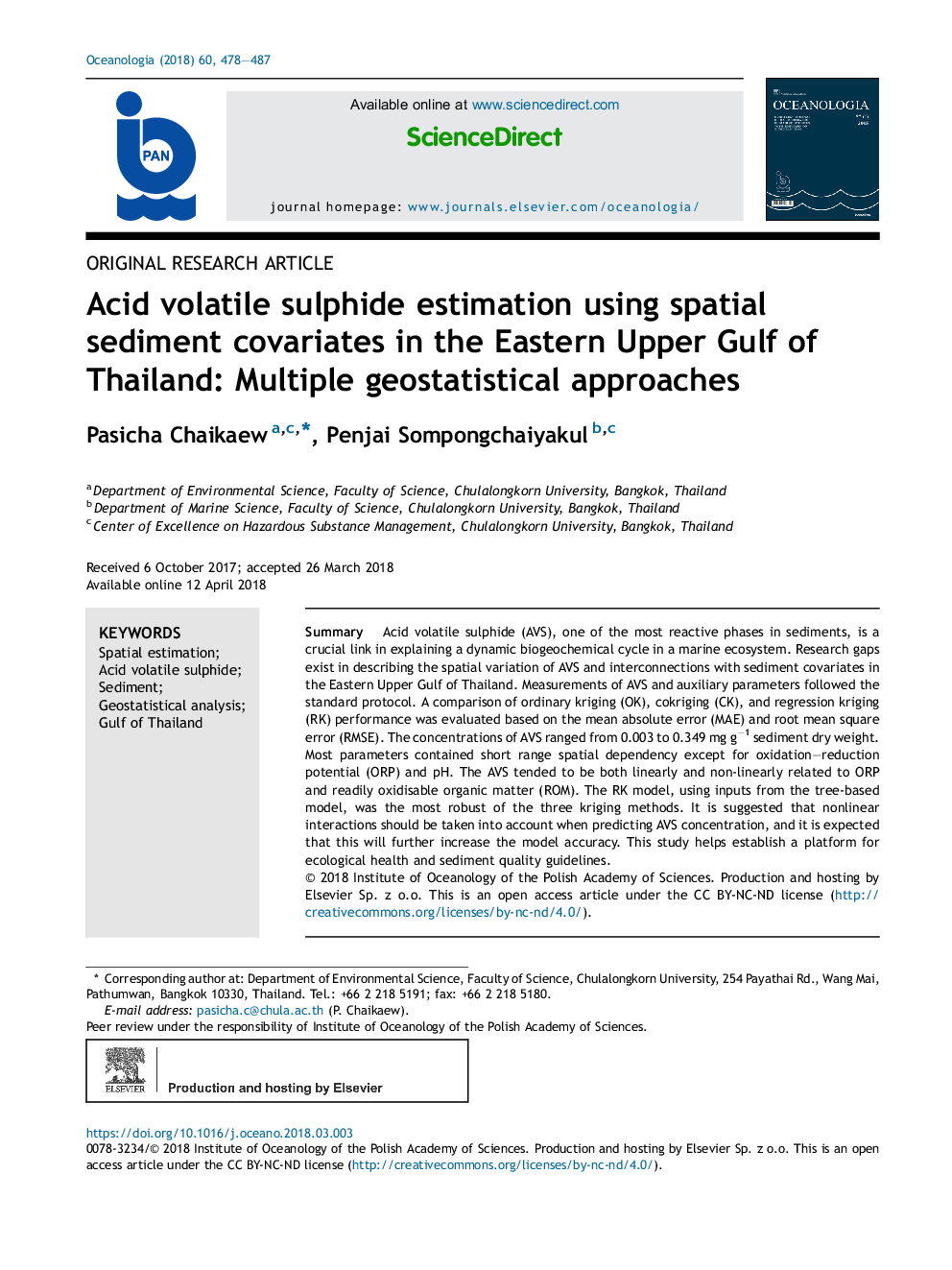| Article ID | Journal | Published Year | Pages | File Type |
|---|---|---|---|---|
| 8949515 | Oceanologia | 2018 | 10 Pages |
Abstract
Acid volatile sulphide (AVS), one of the most reactive phases in sediments, is a crucial link in explaining a dynamic biogeochemical cycle in a marine ecosystem. Research gaps exist in describing the spatial variation of AVS and interconnections with sediment covariates in the Eastern Upper Gulf of Thailand. Measurements of AVS and auxiliary parameters followed the standard protocol. A comparison of ordinary kriging (OK), cokriging (CK), and regression kriging (RK) performance was evaluated based on the mean absolute error (MAE) and root mean square error (RMSE). The concentrations of AVS ranged from 0.003 to 0.349 mg gâ1 sediment dry weight. Most parameters contained short range spatial dependency except for oxidation-reduction potential (ORP) and pH. The AVS tended to be both linearly and non-linearly related to ORP and readily oxidisable organic matter (ROM). The RK model, using inputs from the tree-based model, was the most robust of the three kriging methods. It is suggested that nonlinear interactions should be taken into account when predicting AVS concentration, and it is expected that this will further increase the model accuracy. This study helps establish a platform for ecological health and sediment quality guidelines.
Related Topics
Physical Sciences and Engineering
Earth and Planetary Sciences
Oceanography
Authors
Pasicha Chaikaew, Penjai Sompongchaiyakul,
